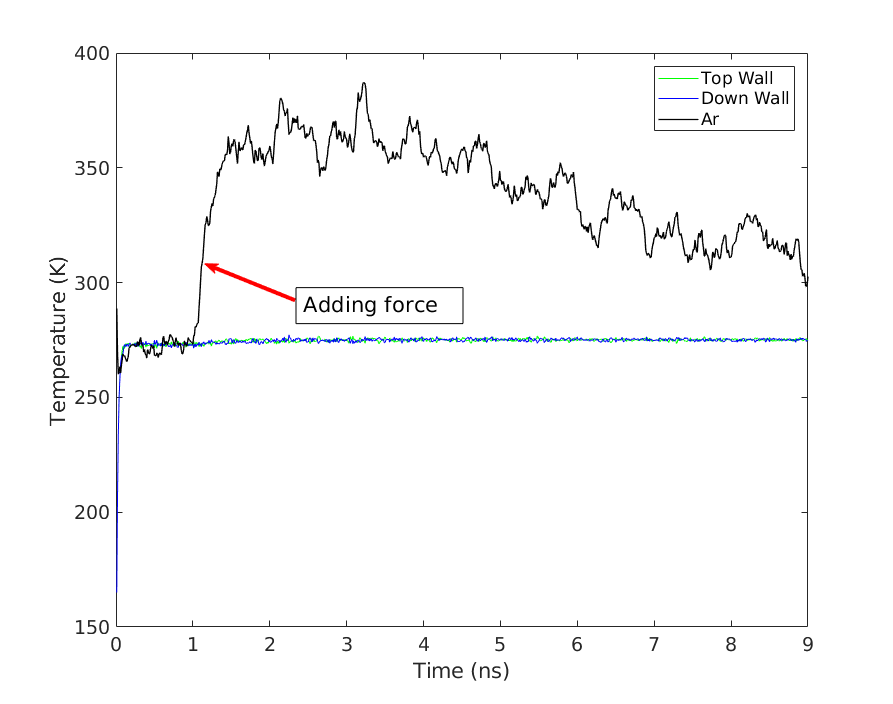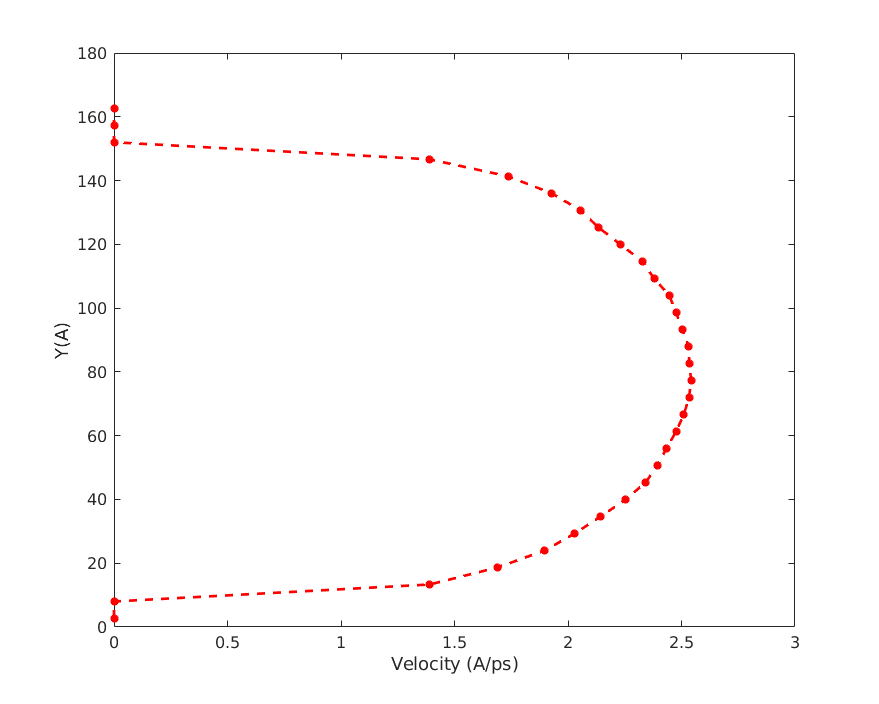Dear Lammps Users,
I am trying to model the Poiseuille flow of Argon gas confined between two parallel Platinum plates. To achieve this goal, I am following the instructions provided in an article in which they used LAMMPS for the same sort of simulation. As you can see in my input file in the following, after creating Platinium plates and Ar atoms in the system, I equilibrated the whole system at 300 K using Berendsen thermostat. In the next step, I removed the thermostat from the gas medium and I added a force on Ar atoms in a specific direction. As you can see in the attached file (velocity.png), the velocity profile in my system looks pretty fine and it is parabolic as it should be. The problem is that the maximum velocity in my system is larger (almost 2 times) than the maximum velocity reported in the article that I am following its instructions (I am using the same number of atoms as reported in the article). To figure out the reason, I monitored the temperature variation of the gas in my system. As you can see in Temp.png, gas temperature after adding force increases to a certain value and after that, it is decreasing. I was wondering what could be the reason of this decrement, as in the second part of the simulation the temperature of the wall is kept constant and the force value is also constant, therefore the gas temperature should not decrease!
I saw also the example provided in the LAMMPS example folder for Poiseuille flow, in which the flow temperature has been controlled in whole the simulation. The thing is since afterward, I want to compute the gas accommodation coefficient on Pt plates, I should avoid manipulating the gas atoms dynamics after equilibration as much as I can.
Any comment which could solve my problem would be highly appreciated.
##--------------------------------------------------------------My input script
----------------------------------------------------------------------------- INITIALIZATION ----------------------
units metal
dimension 3
boundary p p p
atom_style atomic
lattice fcc 3.92
processors 4 1 4
region Pt_B block 0 98 0 6 0 98 units box
region Pt_T block 0 98.0 109 116 0.0 98.0 units box
region whole block 0 98 0 116 0 98 units box
region Ar block 15 80 17.84 99 15 80 units box
create_box 2 whole
mass 1 195.1
mass 2 39.95
create_atoms 1 region Pt_B
create_atoms 1 region Pt_T
lattice fcc 10
create_atoms 2 region Ar
group whole region whole
group PtB region Pt_B
group PtT region Pt_T
group Ar type 2
timestep 0.001
#----------------------------------------------FORCE FIELD--------------------------------------------------------------
pair_style hybrid eam lj/cut 7.35
pair_coeff 1 1 eam Pt_u3.eam
pair_coeff 1 2 lj/cut 0.0068 2.94
pair_coeff 2 2 lj/cut 0.0104 3.4
neighbor 2 bin

